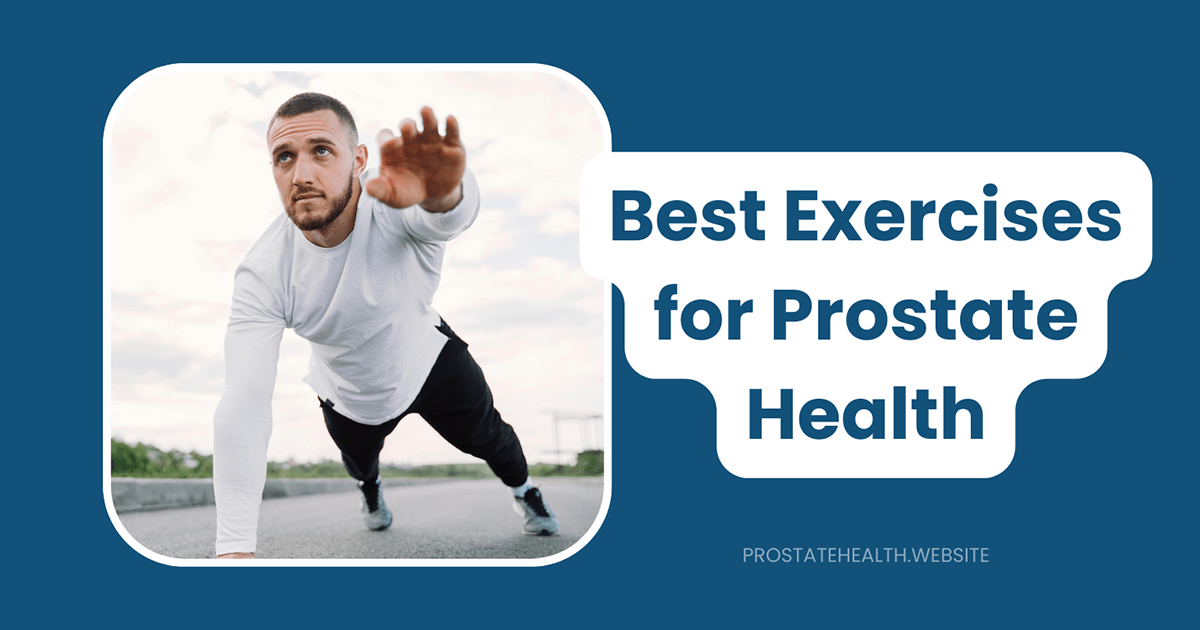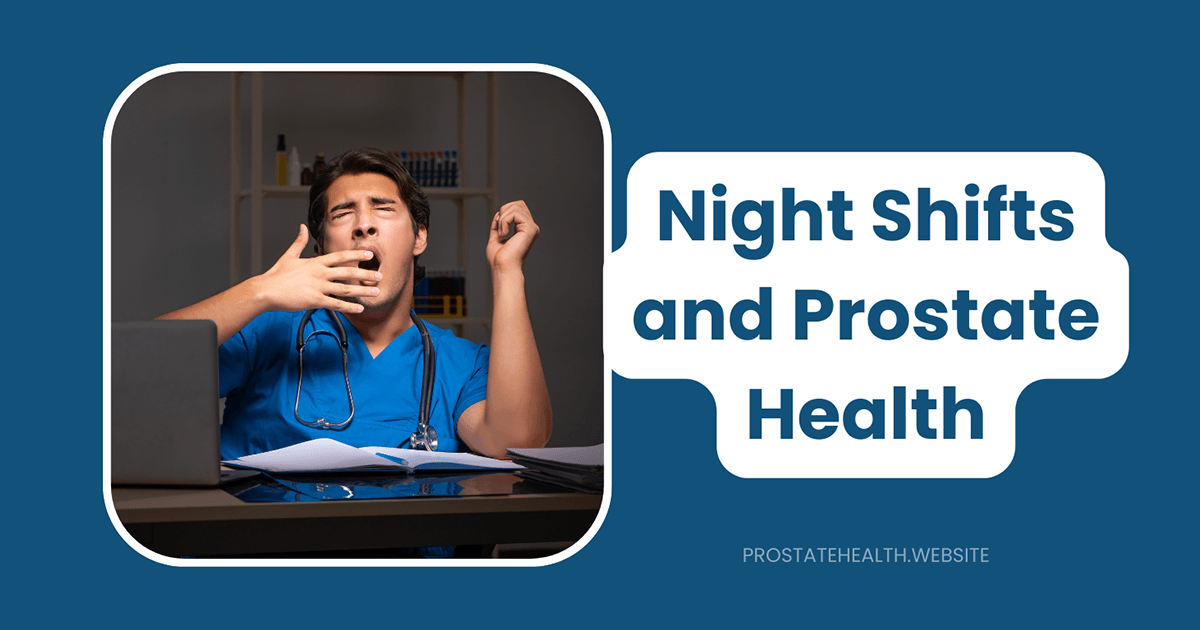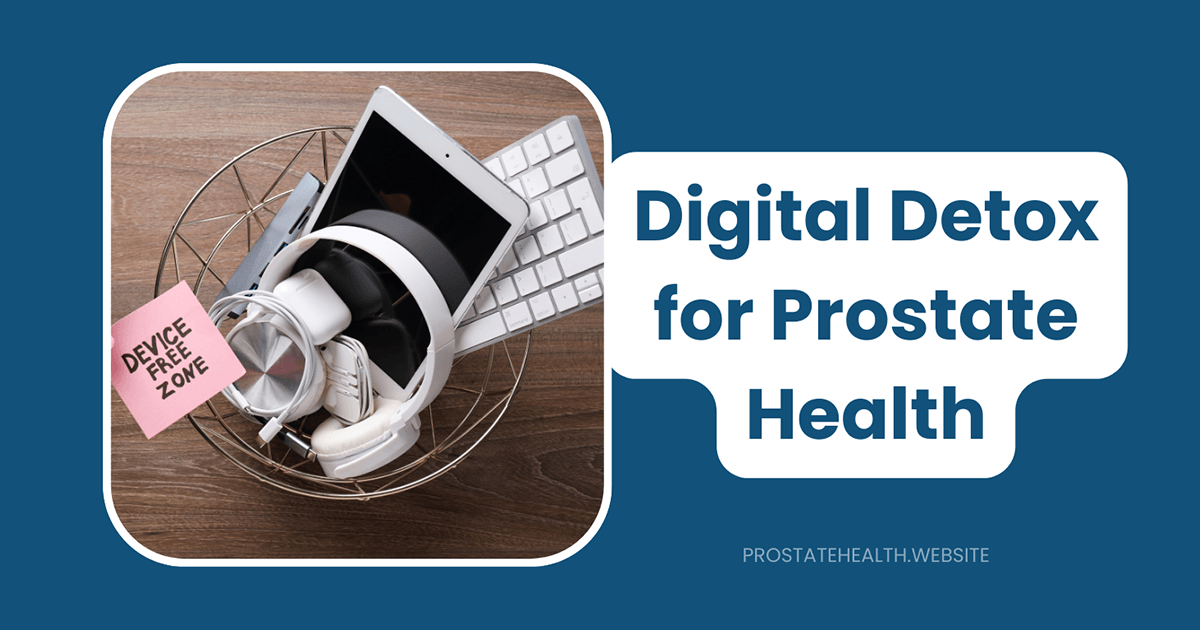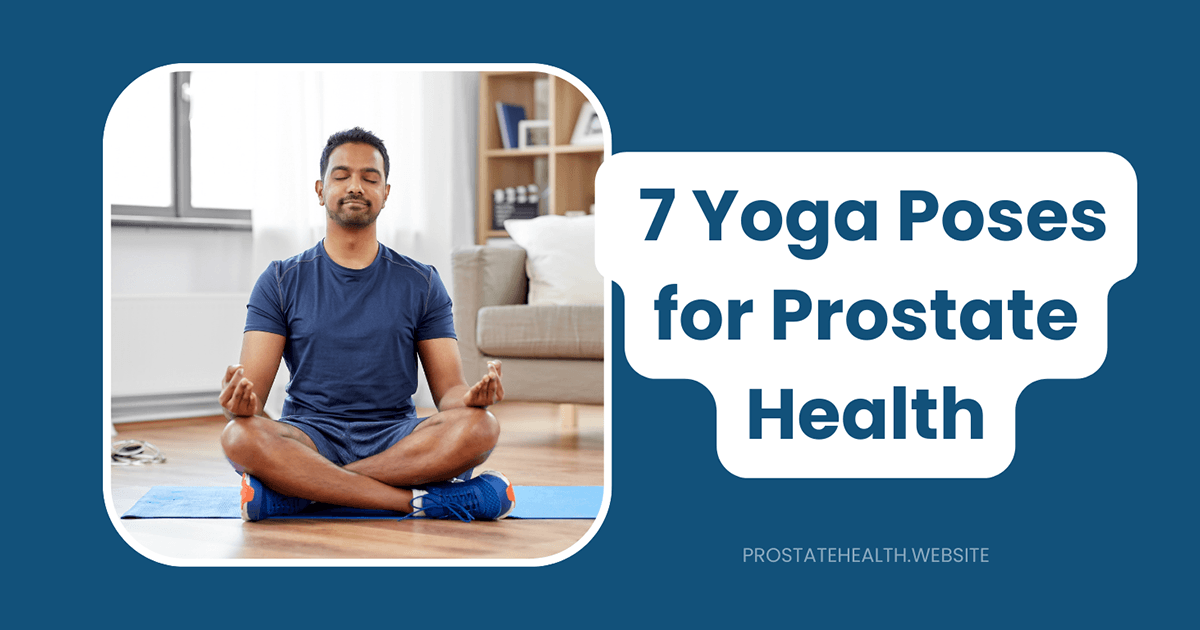The Best Exercises for Prostate Health at Any Age

When it comes to men’s health, the prostate often doesn’t get the attention it deserves until something goes wrong. Yet this small gland plays a crucial role in male reproductive health and can significantly impact quality of life as men age. The good news? Regular exercise is one of the most effective ways to maintain prostate health throughout your life—regardless of your current age or fitness level.
Throughout my years of advocating for men’s health, I’ve seen how physical activity can transform prostate health outcomes. Research consistently shows that active men have lower rates of prostate problems and better outcomes when issues do arise. Let’s explore the best exercises for prostate health at every stage of life, from your 20s to your 70s and beyond.
Why Exercise Matters for Your Prostate
Before diving into specific exercises, it’s important to understand why physical activity is so beneficial for prostate health:
The Science Behind Exercise and Prostate Health
Research published in the Journal of Clinical Oncology found that men who exercise regularly have up to a 30% lower risk of developing prostate problems, including benign prostatic hyperplasia (BPH) and prostate cancer. Several mechanisms explain this protective effect:
- Reduced inflammation: Exercise decreases systemic inflammation, which is linked to prostate enlargement and cancer development.
- Hormonal balance: Regular physical activity helps regulate testosterone and other hormones that influence prostate growth.
- Improved circulation: Better blood flow to the pelvic region delivers more oxygen and nutrients to the prostate while removing waste products.
- Weight management: Maintaining a healthy weight reduces the risk of prostate issues, as excess body fat (especially around the abdomen) is associated with prostate problems.
- Stress reduction: Exercise lowers stress hormones like cortisol, which can otherwise contribute to prostate inflammation.
A 2024 study found that men whose cardiorespiratory fitness improved by just 3% annually were 35% less likely to develop prostate cancer compared to those whose fitness declined. That’s powerful motivation to get moving!
Core Exercises Beneficial at Any Age
Certain exercises benefit prostate health regardless of your age. These foundational activities should form the basis of your prostate health fitness routine:
1. Kegel Exercises: The Prostate’s Best Friend
Kegel exercises strengthen the pelvic floor muscles, which support the bladder and bowel and play a role in sexual function. Though often associated with women’s health, Kegels are equally important for men.
How to perform Kegels correctly:
- Identify your pelvic floor muscles by attempting to stop urination midstream (only do this to identify the muscles, not as a regular practice)
- Once you’ve located these muscles, tighten them for 3-5 seconds
- Relax for 3-5 seconds
- Repeat 10-15 times per session
- Perform 3-4 sessions daily
The beauty of Kegel exercises is that they can be done anywhere, anytime, without anyone knowing. You can do them while sitting at your desk, standing in line, or watching TV.
According to the Mayo Clinic, consistent Kegel exercises can improve urinary control, reduce symptoms of an enlarged prostate, and potentially enhance sexual performance.
2. Aerobic Exercise: Circulation Boost
Aerobic activities increase heart rate and improve circulation throughout the body, including to the prostate. Aim for at least 150 minutes of moderate-intensity aerobic exercise per week.
Best aerobic exercises for prostate health:
- Walking: Low-impact and accessible to almost everyone
- Swimming: Provides full-body exercise without joint stress
- Cycling: Great for cardiovascular health (use a prostate-friendly saddle)
- Elliptical training: Combines upper and lower body movement
- Dancing: Fun way to get your heart rate up
A study published in the European Urology Journal found that men who engaged in regular aerobic exercise had a 57% slower progression rate of prostate cancer compared to sedentary men. That’s a compelling reason to lace up those walking shoes!
3. Strength Training: Hormone Regulation
Resistance training helps maintain muscle mass, supports metabolism, and helps regulate hormones that affect prostate health. Aim for at least two strength training sessions per week.
Key strength exercises for prostate health:
- Squats: Strengthen lower body and core
- Lunges: Improve balance and lower body strength
- Bridges: Target pelvic floor and glute muscles
- Planks: Build core stability
- Push-ups: Develop upper body strength
Research from the Journal of Strength and Conditioning Research suggests that regular strength training can help maintain healthy testosterone levels, which is important for prostate health when kept in balance.
Age-Specific Exercise Recommendations
While the core exercises above benefit men of all ages, certain approaches are particularly valuable during different life stages:
In Your 20s and 30s: Building the Foundation
Young men rarely think about prostate health, but this is precisely when you should establish habits that will protect your prostate for decades to come.
Focus areas:
- High-intensity interval training (HIIT): Builds cardiovascular fitness efficiently
- Team sports: Basketball, soccer, and tennis provide both aerobic and anaerobic benefits
- Strength training: Establish good form and consistent habits
- Flexibility work: Maintain mobility that will serve you well later in life
Sample weekly routine:
- 2-3 HIIT sessions (20-30 minutes each)
- 1-2 team sport sessions or longer cardio workouts
- 2-3 strength training sessions
- Daily stretching (5-10 minutes)
Pro tip: This is the time to learn proper form and technique. Consider working with a trainer initially to ensure you’re performing exercises correctly, which will prevent injuries and maximize benefits.
In Your 40s: Maintenance and Prevention
The 40s are when the prostate typically begins its second growth phase, making this a crucial decade for prostate health.
Focus areas:
- Consistent aerobic exercise: Maintain cardiovascular health
- Core and pelvic floor strengthening: Support the prostate and urinary function
- Stress-reducing activities: Combat rising stress levels common in this decade
- Balance between high and low impact: Protect joints while maintaining intensity
Sample weekly routine:
- 3-4 moderate-intensity aerobic sessions (30-45 minutes each)
- 2 strength training sessions focusing on compound movements
- 1-2 yoga or Pilates sessions for core and flexibility
- Daily Kegel exercises
Pro tip: In your 40s, recovery becomes increasingly important. Ensure you’re getting adequate rest between workouts and consider adding activities like yoga that combine strength, flexibility, and stress reduction.
In Your 50s: Adapting to Changes
By their 50s, about half of men show signs of benign prostatic hyperplasia (BPH). Exercise becomes even more important during this decade.
Focus areas:
- Regular, moderate aerobic activity: Maintain heart health without overtraining
- Functional strength training: Focus on movements that support daily activities
- Pelvic floor exercises: Counteract potential urinary symptoms
- Balance work: Prevent falls and maintain stability
Sample weekly routine:
- 4-5 moderate aerobic sessions (30 minutes each)
- 2 full-body strength training sessions
- 1-2 yoga, tai chi, or Pilates sessions
- Daily pelvic floor exercises
Pro tip: Listen to your body and adjust intensity as needed. Quality and consistency matter more than intensity at this stage.
In Your 60s and Beyond: Maintaining Function
Exercise remains vital in your 60s, 70s, and beyond, with a shift toward maintaining function and quality of life.
Focus areas:
- Low-impact aerobic exercise: Walking, swimming, and recumbent cycling
- Strength maintenance: Preserve muscle mass and bone density
- Balance and coordination: Prevent falls and maintain independence
- Flexibility and mobility: Keep joints healthy and maintain range of motion
Sample weekly routine:
- Daily walking (20-30 minutes)
- 2-3 strength sessions using machines, resistance bands, or bodyweight
- 2-3 balance-focused sessions (tai chi is excellent)
- Daily stretching and mobility work
- Consistent pelvic floor exercises
Pro tip: Group exercise classes designed for seniors can provide both physical benefits and social connection, which is also important for overall health.
Specific Exercises for Common Prostate Conditions
Different prostate conditions may benefit from targeted exercise approaches:
Exercises for BPH (Enlarged Prostate)
If you’re dealing with an enlarged prostate, these exercises may help manage symptoms:
- Walking: Regular, brisk walking improves circulation to the prostate and can reduce inflammation.
- Kegel variations: For BPH, try “quick flicks” (rapid contractions and releases) in addition to standard holds.
- Hip stretches: Stretches like the happy baby pose and butterfly stretch can relieve tension in the pelvic region.
- Seated pelvic tilts: While sitting on an exercise ball, alternate between tilting your pelvis forward and backward to strengthen core muscles that support the prostate.
- Diaphragmatic breathing: Deep belly breathing activates the parasympathetic nervous system, which can help relax the pelvic floor and potentially ease urinary symptoms.
Exercises for Prostatitis
For men dealing with prostatitis (inflammation of the prostate), certain exercises may help manage symptoms:
- Gentle stretching: Focus on hip flexors, hamstrings, and lower back to release tension in the pelvic area.
- Walking: Low-impact movement can increase circulation without aggravating symptoms.
- Relaxation-focused yoga: Poses like child’s pose and happy baby can release tension in the pelvic floor.
- Pelvic floor relaxation: Learning to relax these muscles can be as important as strengthening them for some types of prostatitis.
- Swimming: The buoyancy of water reduces pressure on the pelvic region while providing gentle resistance.
Note: If you have acute bacterial prostatitis, consult your healthcare provider before starting any exercise program, as rest may be recommended initially.
Exercises After Prostate Cancer Treatment
For men recovering from prostate cancer treatment, exercise is particularly valuable but may need to be modified:
- Graduated walking program: Start with short distances and gradually increase.
- Modified Kegels: Work with a pelvic floor physical therapist to develop an appropriate routine.
- Gentle resistance training: Rebuild strength gradually, starting with light weights or resistance bands.
- Balance exercises: Counteract potential side effects of hormone therapy on muscle and bone.
- Mindful movement practices: Tai chi and gentle yoga can help manage stress and improve body awareness.
According to the Prostate Cancer Foundation, men who exercise regularly after treatment have better quality of life and potentially improved cancer outcomes.
Making Exercise Work for You: Practical Tips
Knowing which exercises to do is only half the battle—establishing and maintaining a routine is equally important:
Finding Your Motivation
- Connect exercise to values: Focus on how being active helps you participate in activities you love and spend quality time with people you care about.
- Track progress: Use a fitness app or journal to monitor improvements in strength, endurance, and prostate symptoms.
- Exercise with others: Join a walking group, find a workout buddy, or participate in community fitness classes.
- Set realistic goals: Start where you are, not where you think you should be.
Overcoming Common Barriers
- “I don’t have time”: Even 10-minute sessions provide benefits. Schedule exercise like any other important appointment.
- “Exercise is uncomfortable”: Start with gentle activities and gradually increase intensity. Discomfort should never become pain.
- “I don’t know where to begin”: Consider working with a fitness professional who has experience with older adults or men’s health issues.
- “I have other health concerns”: Speak with your healthcare provider about safe exercise options that accommodate your specific health needs.
Making It Sustainable
- Choose activities you enjoy: The best exercise is the one you’ll actually do consistently.
- Create environmental triggers: Keep walking shoes by the door, set out exercise clothes the night before, or place resistance bands somewhere visible.
- Build in accountability: Share your goals with friends or family, or use technology to track and share your progress.
- Be flexible: Have indoor options for bad weather and alternative exercises for days when your primary activity isn’t possible.
When to Exercise Caution
While exercise is generally beneficial for prostate health, there are situations that warrant caution:
- Acute prostatitis: During active infection, rest may be more appropriate than exercise. Follow your doctor’s guidance.
- Recent surgery: After prostate surgery, follow your surgeon’s recommendations for returning to activity gradually.
- Severe BPH with urinary retention: Certain exercises might temporarily worsen symptoms. Work with a healthcare provider to develop an appropriate routine.
- Uncontrolled health conditions: If you have uncontrolled high blood pressure, heart disease, or other serious health concerns, get medical clearance before starting a new exercise program.
Conclusion: Consistency Is Key
The best exercise program for prostate health is one that you can maintain consistently throughout your life. It doesn’t need to be complicated or time-consuming—even modest amounts of regular physical activity can yield significant benefits for your prostate and overall health.
I’ve found that men who understand the connection between exercise and prostate health are more motivated to stay active. Breaking the silence around prostate health and emphasizing the positive steps men can take is one of the most important things we can do for ourselves and the men in our lives.
Remember, it’s never too early to start exercising for prostate health, and it’s never too late to gain benefits. Whether you’re 25 or 75, your prostate will thank you for getting moving today.
What small step could you take this week to be more active for your prostate health? The journey to better prostate health begins with a single step—literally!






